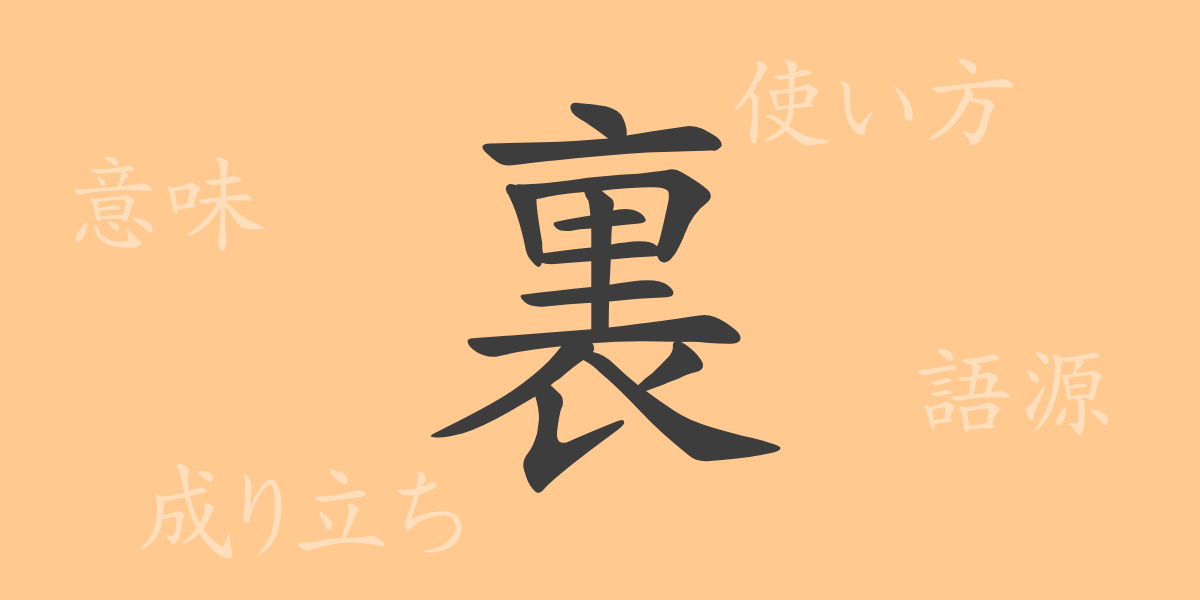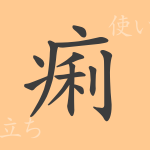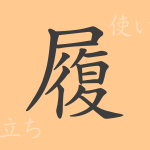In the Japanese language, there exists a variety of characters that demonstrate the richness of expression, and among them, “裏” (ura) is a 常用漢字 (jōyō kanji) that holds numerous meanings. This character, frequently used in daily life, has a fascinating history and various applications. In this article, we will delve into the origins of “裏” (ura), its meanings, usage, and even the idioms and phrases that incorporate this character, unveiling its full spectrum.
The Origin (語源) of 裏 (ura)
The kanji “裏” (ura) can trace its origins back to the ancient Chinese oracle bone script. Initially, it was used to denote the inner side of clothing. The character evolved by combining “衣” (衣, meaning “cloth”) with “里” (里, which has different meanings), signifying “the inside of clothing,” thus developing into the word “裏” (ura) which means “the reverse side.” Over time, it began to be used not only to indicate the physical reverse side but also in a metaphorical sense.
Meanings and Usage of 裏 (ura)
The character “裏” (ura) signifies the opposite side or the inner side of an object, and metaphorically, it can refer to the hidden side, secrets, or true intentions that are not visible. It is also used in expressions that imply concealment, such as 裏切り (uragiri, betrayal) or 裏事情 (urajijō, behind-the-scenes circumstances). In usage, it appears in various contexts like “裏を返す” (ura o kaesu, to turn over), “裏話” (urabanashi, behind-the-scenes story), and “裏技” (urawaza, secret trick).
Reading, Stroke Count, and Radical of 裏 (ura)
The kanji “裏” (ura) is fundamental knowledge in Japanese reading and writing.
- Reading: In 音読み (on’yomi), it is read as “リ” (ri), and in 訓読み (kun’yomi), it is read as “うら” (ura).
- Stroke Count: “裏” (ura) has 13 strokes.
- Radical: The radical is “衤” (ころもへん, koromohen).
Idioms, Phrases, and Proverbs Using 裏 (ura) and Their Meanings
Idioms and proverbs that include “裏” (ura) reflect the Japanese spirit and culture. For example, “裏切る” (uragiru) refers to the act of betrayal, and “表裏一体” (hyōri ittai) signifies the two-sided nature of things. Other expressions include “裏目に出る” (urame ni deru, to backfire) and “裏をかく” (ura o kaku, to outwit someone). These expressions help in understanding the profound meanings behind the words.
Summary of 裏 (ura)
Through this article, we have understood the rich meanings and usages of the kanji “裏” (ura). Not only does it refer to the physical reverse side, but it also represents hidden truths and inner aspects, symbolizing the depth of the Japanese language. Idioms and phrases using “裏” (ura) are essential elements in our daily conversations, enriching communication.
“`

























